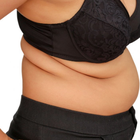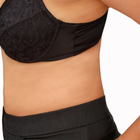Gastric Sleeve in Vietnam
Search and Compare the Best Clinics and Doctors at the Lowest Prices for Gastric Sleeve in Vietnam

Find the best clinics for Gastric Sleeve in Vietnam
No pricing info available
Egypt offers the best prices Worldwide
Price: $ 777
From 6 verified reviews
Wndy, 11 August 2020
I've been to several hospitals in Hanoi over the years, but visited Thu Cuc Hospital for the first time this month. You're given a translator as soon as you arrive and they help every step of the way, so it's really easy to communicate with the staff as well as understanding the recommendations and treatments prescribed. The hospital seems to be run quite efficiently, and everything was "western standard" clean. I saw both a Cuban doctor and a Vietnamese doctor; both did the appropriate exams and tests, and prescribed the recommended treatments (I'm a nurse and I actually do check this stuff before I blindly follow what I'm told by medical staff - something I've especially learned to do here in Vietnam). It seemed to be quite well-equipped, too. So, I'm impressed! Prices are less than in many of the private hospitals and I felt that I was treated very well. I'd definitely return to this hospital when the need for medical care arises again.
- Home
- Vietnam
Compare Before & After Photos of _procedure_photos.phpGastric Sleeve


Front view


Full-side view


Front view


Front view


Front view


Front view
WHY US?
At Medijump, we're making medical easy. You can search, compare, discuss, and book your medical all in one place. We open the door to the best medical providers worldwide, saving you time and energy along the way, and it's all for FREE, no hidden fees, and no price markups guaranteed. So what are you waiting for?

Free

Best Price

Widest Selection

Risk-Free
What you need to know about Gastric Sleeve in Vietnam

The Gastric Sleeve procedure, also known as Vertical Sleeve Gastrectomy or Sleeve Surgery, is a minimally invasive surgical method designed to advocate weight loss and promote healthier living. It garners acclaim from medical professionals due to its effectiveness in helping patients shed an average of 65 to 70% of excess weight.
The expert surgeons at NYBG utilize the single-incision laparoscopic technique, making a solitary entry point through the belly button. This innovative approach results in minimal to no scarring and significantly reduces the recovery duration.
The surgery itself only takes about 35 minutes. During this time, the surgeon implements a diminutive camera, a laparoscope, along with several other instruments to perform the operation. With the help of a stapling apparatus, 85-90% of the patient's stomach is removed, leaving behind a banana-shaped stomach that is a mere 10-15% of the original volume.
What does a Gastric Sleeve Procedure Involve?
For your surgery, you'll be under general anesthesia, ensuring you're comfortably asleep throughout the procedure. Your surgeon will perform a laparoscopic surgery, making several small incisions on your upper abdomen where a laparoscope and tiny surgical instruments will be inserted.
Following this, the anesthesiologist will guide a sizing tube through your mouth and down into your stomach. With a laparoscopic stapler, the surgeon will partition the stomach, resulting in a narrowed vertical sleeve. The excess portion of the stomach that has been detached is then extracted from the abdomen through one of the incisions. Lastly, your surgeon may carry out a dye study or an upper endoscopy to double-check for any potential leaks in the newly formed sleeve.
How Long Should I Stay in Vietnam for a Gastric Sleeve Procedure?
Following a surgical procedure, patients typically reside in a rehabilitation centre for an initial 2 to 3-day period. Please note, that this duration can flex based on how the individual's body responds to the healing process.
It is highly recommended patients continue their stay in the pertinent vicinity for an additional 3 weeks subsequent to the surgical procedure. Such an arrangement allows for meticulous post-operative monitoring and fosters an environment conducive to a smooth recovery. A surgical procedure entails both physical and mental recovery; the latter being equally pertinent. An additional stay provides the necessary time to recuperate, rest and efficiently handle any post-surgical complications that could potentially arise.
What's the Recovery Time for Gastric Sleeve Procedures in Vietnam?
The time it takes to fully recover from Gastric Sleeve varies from one person to the other. Factors such as personal healing rates, specific techniques used during the surgery and overall health condition affect the recovery time. Generally, patients would typically need about three to five weeks for recovery.
During this healing period, it's essential to maintain a healthy lifestyle to speed up recovery and reduce potential complications. Part of this involves a proper diet. Since the procedure usually results in a smaller stomach size, you will need to adjust your eating habits. It's recommended to consume smaller meals throughout the day, focusing more on nutrient-rich foods.
Exercise is another crucial component of the post-procedure period. Stick to a regular workout routine to support sustained weight loss and overall health improvement. They suggest several strategies and provide important tips to stay healthy during your recovery period.
What sort of Aftercare is Required for Gastric Sleeve Procedures in Vietnam?
Going through the Gastric Sleeve is just the start of your path toward better health. After the treatment, it's crucial that you take good care of yourself for the full healing process and to ensure the success of the procedure. Part of this care involves sticking to a healthy diet, regular exercise, taking any medications as recommended by your doctor and keeping up with medical check-ups. Your dedication to these new lifestyle habits, especially with regard to your diet and physical activities can notably speed up your recovery and assist you in achieving your weight goals.
Equally, your mind requires care after the Gastric Sleeve. Undergoing such changes could bring about feelings that may impact your emotional state and overall adherence to these new lifestyle changes. In such cases, seeking professional mental health support can be beneficial in managing any stress, anxiety, or depression you might encounter. Balancing physical well-being and mental health is key to a full recovery and maintaining long-term health after undergoing the Gastric Sleeve.
What's the Success Rate of Gastric Sleeve Procedures in Vietnam?
The achievement fee for the Gastric Sleeve in Vietnam is usually high. Success is often gauged through the quantity of weight lost. Typically, patients can assume to shed approximately 60% to 70% of their excess weight.
The general fitness enhancement often discovered with Gastric Sleeve can result in improvements or maybe a complete decision of weight problems-related situations like hypertension, sleep apnea, cardiovascular sicknesses, and type 2 diabetes. However, fulfilment after the Gastric Sleeve is dependent on the commitment to lifestyle adjustments and publish-op care. Results can range based totally on the dedication to nutritional modifications along with other elements like exercising, genetics, and typical fitness popularity.
Are there Alternatives to Gastric Sleeve Procedures in Vietnam?
Yes, there are options for the Gastric Sleeve in Vietnam. These can be classified into non-surgical and surgical alternatives. Non-surgical alternatives include weight loss plans and lifestyle adjustments, scientific weight reduction applications, and prescription weight reduction medicines.
On the other hand, surgical options for the Gastric Sleeve consist of different bariatric surgical procedures like gastric bypass surgical procedure, adjustable gastric banding, duodenal transfer, and gastric balloon techniques. These options carry their personal set of advantages, fitness implications, and requirements.
What Should You Expect Before and After the Procedure?
Before the Gastric Sleeve, patients usually have an intensive scientific evaluation and are required to observe a pre-operative eating regimen, to limit surgical headaches and useful resource recovery. Patients additionally undergo a psychological assessment to evaluate their emotional readiness for surgery and the subsequent way of life modifications.
Post-manner, maximum patients will stay in the clinic for two to a few days to be monitored. Gradual nutritional changes occur over the next several weeks, progressing from clean liquids to pureed foods, onto gentle foods and finally, strong meals. Both vitamins and exercise plans are customized for man or woman sufferers.
What's the Key to Long-Term Success with Gastric Sleeve in Vietnam?
Surgical intervention is an important part of the Gastric Sleeve, but it's not the only factor that ensures long-term success. A larger part of this success is the adoption of a healthier lifestyle post-procedure. Regular exercise, attending follow-up medical appointments, vigilantly monitoring your vitals, keeping an eye on your nutrition intake, and adhering to prescribed medication regimes are fundamental components of this lifestyle. A commitment to these practices guarantees sustainable results, as the procedure alone may not uphold the achieved results indefinitely.
Incorporating changes into daily routines forms another essential half of this post-treatment lifestyle. Conscious meal planning, mindful eating, moderating portion sizes, and avoiding high-calorie drinks or snacks are beneficial dietary changes. Also, routine physical activity and maintaining an active life can help retain an optimized body weight. More importantly, mental and emotional support from loved ones - and at times professional counselling - can greatly improve the chances of adherence to these new routines. Finally, remember that this isn't just a treatment procedure but a significant shift towards a healthier lifestyle for the betterment of your future.
Where Can I Get the Best Gastric Sleeve Care in Vietnam?
There are many great healthcare centres in In Vietnam. They offer good care and treatments for people having the Gastric Sleeve. When picking on one, remember to look at the doctor's experience, the certifications of the facility, what other patients say about them, and if they are accredited.
Make sure they also offer aftercare once the Gastric Sleeve is done. This includes advice about what to eat and how to keep healing. This can help you stay healthy after surgery and is very important for the success of the Gastric Sleeve. Meeting with a support group can also help you in the long run.
How Can Gastric Sleeve Improve My Quality of Life?
Gastric Sleeve can significantly improve your quality of life in various ways. The principal benefit of it is the significant weight loss you can achieve. This dramatic change in body mass can reduce your vulnerability to long-term health issues like diabetes and heart disease.
Another advantage of Gastric Sleeve is the improvement in your confidence. A boost in self-esteem inevitably leads you to feel content and positive about life. Severe health problems like sleep apnea can also be mitigated with this treatment. So, Gastric Sleeve isn't just about physical transformation, it's about leading a healthier, happier life in Vietnam.
Whilst the information presented here has been accurately sourced and verified by a medical professional for its accuracy, it is still advised to consult with your doctor before pursuing a medical treatment at one of the listed medical providers
No Time?
Tell us what you're looking for and we'll reachout to the top clinics all at once
Enquire Now

Popular Procedures in Vietnam
Prices Start From $1

Prices Start From $359

Prices Start From $435

Prices Start From $75

Prices Start From $435

Recommended Medical Centers in Vietnam for Gastric Sleeve

- Interpreter services
- Translation service
- Religious facilities
- Medical records transfer
- Medical travel insurance
- Health insurance coordination
- TV in the room
- Safe in the room
- Phone in the room
- Private rooms for patients available

- Interpreter services
- Translation service
- Religious facilities
- Medical records transfer
- Medical travel insurance
- Health insurance coordination
- TV in the room
- Safe in the room
- Phone in the room
- Private rooms for patients available

- Interpreter services
- Translation service
- Religious facilities
- Medical records transfer
- Medical travel insurance
- Health insurance coordination
- TV in the room
- Safe in the room
- Phone in the room
- Private rooms for patients available

- Interpreter services
- Translation service
- Religious facilities
- Medical records transfer
- Medical travel insurance
- Health insurance coordination
- TV in the room
- Safe in the room
- Phone in the room
- Private rooms for patients available

- Interpreter services
- Translation service
- Religious facilities
- Medical records transfer
- Medical travel insurance
- Health insurance coordination
- TV in the room
- Safe in the room
- Phone in the room
- Private rooms for patients available

- Interpreter services
- Translation service
- Religious facilities
- Medical records transfer
- Medical travel insurance
- Health insurance coordination
- TV in the room
- Safe in the room
- Phone in the room
- Private rooms for patients available

- Interpreter services
- Translation service
- Religious facilities
- Medical records transfer
- Medical travel insurance
- Health insurance coordination
- TV in the room
- Safe in the room
- Phone in the room
- Private rooms for patients available

- Interpreter services
- Translation service
- Religious facilities
- Medical records transfer
- Medical travel insurance
- Health insurance coordination
- TV in the room
- Safe in the room
- Phone in the room
- Private rooms for patients available

- Interpreter services
- Translation service
- Religious facilities
- Medical records transfer
- Medical travel insurance
- Health insurance coordination
- TV in the room
- Safe in the room
- Phone in the room
- Private rooms for patients available

- Interpreter services
- Translation service
- Religious facilities
- Medical records transfer
- Medical travel insurance
- Health insurance coordination
- TV in the room
- Safe in the room
- Phone in the room
- Private rooms for patients available
Gastric Sleeve in and around Vietnam
About Vietnam
Situated at the extreme east of the Indochina Peninsula, Vietnam is a country that exhibits profound cultural richness and captivating landscapes. It holds the distinction of being the world's 15th most populous country, housing over 94 million residents scattered across its diverse geographical expanse. Despite grappling with issues like poverty and corruption, Vietnam's impressive economic performance cannot be overlooked. Notably, the country boasts a commendable GDP growth rate and is celebrated as one of the fastest-growing economies globally.
This country is well-known around the globe for its breathtaking natural beauty. It's also recognized for its energetic, larger-than-life cities that are always buzzing with activity. Furthermore, its culture is intricate and assorted, attracting millions who appreciate rich customs and traditions. In 2018, this place was a magnet for tourists, drawing in over 15 million visitors who were eager to immerse themselves in its unique way of life.
Broadly celebrated for its splendid scenic landscapes, there's an undeniable charm this country possesses. The vivacious megacities are a thrilling fusion of noise, colors, and life that leaves an impression on all who stroll through them. The cultural mosaic of this land is complex, and varied, presenting evidence of a fascinating history shared through countless generations. The year 2018 saw floods of tourists - well in excess of 15 million - come to explore, each leaving with their own tale of discovery within its borders.
The rapid development of Vietnam has made it into the next medical tourism hub in Southeast Asia. Now, medical tourists consider the country as their potential medical destination. Many new medical centers have sprung up and welcomed thousands of patients to relax and enjoy their treatment. The country offers a wide range of cost-effective medical treatment, well-trained doctors, and professional equipment. The country focuses on promoting medical tourism to neighboring markets such as Laos and Cambodia.
Popular Parts of Vietnam
- Ho Chi Minh, formerly Saigon, is the most populous city in Vietnam. It is the financial center and home to the largest stock exchange in the country. Tourists coming to the city can enjoy its many tourist spots such as shopping in the Ben Thanh Market, viewing the city from Saigon Skydeck, discovering the city’s history from The War Remnants Museum, or learning the culture of Jade Emperor Pagoda. Other than the attractions, the city is also famous for its traditional food, including pho and pork rolls.
- Hanoi is the capital of Vietnam and the country’s major metropolitan and political center. Tourists will find many well-preserved colonial buildings, museums, and pagodas. As one of the most ancient capitals in the world, most tourists will be delighted to explore the city’s historic Old Quarter, spend a beautiful day in Hoan Kiem Lake, or visit the Temple of Literature.
- Hoi An invites tourists to experience a slow-paced, relaxing lifestyle. The city’s Old Town has successfully preserved Japanese merchant houses and Chinese temples. To get a glimpse of the city, many tourists will opt for a bicycle tour. The city also offers a unique farming and fishing experience for its visitors. Off the coast of the city, tourists will be overjoyed to find a diving paradise with hundreds of different coral and fish.
- Nha Trang is a coastal city on the South Central Coast of the country. Tourists usually come to this city for its stunning white sandy beaches and scuba diving. In addition to the beautiful beaches, Nha Trang Bay is considered to be one of the world’s most beautiful bays. The city is also home to the remnants of the Champa Kingdom, gothic-style Catholic churches, and many Buddhist temples.
- Da Nang is located on the coast of the South China Sea, making it the most important port city of Vietnam. The city continues to evolve each year, with modern hotels and restaurants being developed all around it. It is the tourist capital of South Central Vietnam. Tourists visit the city to enjoy its tranquil beaches with crystal clear waters, beautiful ancient pagodas, interesting French colonial buildings, and green national parks.
Weather and Climate in Vietnam
Vietnam, situated uniquely on the map, experiences differing climates in its varied regions. If you travel south, you'll find a tropical monsoon climate. This climate type typically comes with two main seasons - the wet season and the dry season.
Straying north, however, you'll encounter a different story altogether. Here, the climate is categorized as monsoonal but it's accompanied by four clear-cut seasons - spring, summer, autumn, and winter. So, regardless of the time of year, there's a high chance you'll experience a unique slice of Vietnamese weather, depending entirely on which part of the country you've set foot in.
- The south experiences wet and dry season and the wet season lasts from September to December. There is more rainfall between September and November. The dry season starts in January and ends in August and the average annual temperature is around 26 °C. Some cities such as Da Nang are prone to typhoons during the wet season.
- In the north, spring starts in February characterized by some rain and cold temperature. The end of April is the start of summer, with intense sunshine and sometimes even a heatwave. The average temperature during Summer is 27.5 °C but it can feel a lot hotter. Autumn starts in September and ends in November. Autumn has the best weather, with a lot of sunshine and calm wind. From December to January is Winter and it is generally cold with an average temperature of 17 °C which can drop as low as 7 °C.
Getting Around in Vietnam
There are numerous airports in Vietnam that connect the major cities. However, there are three major international airports where international visitors usually arrive at, Ho Chi Minh, Hanoi, and Da Nang. Most international flights will arrive at Tan Son Nhat International Airport which serves domestic and international flights to and from major cities in Asia, Europe, and Australia. In terms of capacity, the biggest airport in the country is the Noi Bai International Airport in Hanoi.
The airport is a hub for both local and global travel. It houses two terminals within its boundaries. Terminal 1 is tasked with the management of domestic flights, servicing those traveling within the country's borders. On the other hand, Terminal 2 oversees international flight operations, connecting this airport to numerous cities across Asia and Europe. Affordable airlines, including the likes of Jetstar Pacific and VietJet Air, schedule flights departing from and arriving at both Tan Son Nhat and Noi Bai airports - a testament to the airport's reach and convenience to travelers with varying budget needs.
Tourists do have a few travel options to get around Vietnam. The country is served by trains running from Ho Chi Minh City to Hanoi and it stops in many of the popular areas such as Da Nang and Nha Trang. Buses are a great option for tourists to get around the country and the buses are privately operated buses called “open tour” buses. There is also a national bus system, but they are generally not as comfortable as the private buses.
Taxis are available in most cities and can be hailed directly from the streets or via a phone call. The fare usually starts at VND 10,000 to VND 12,000. If you need to be quick, try the motorcycle taxis known as Xe Om. You will need to negotiate the price but they can be found in most parts of the cities. Cyclo (similar to trishaw) is also available for short-distance travel within a city. For easier travel, opt for Grab Motorbike, an online hailing app similar to Uber.
Tourist Visas in Vietnam
- Citizens of 24 countries, including Singapore, Thailand, Russia, and Japan, can enter and stay in Vietnam for up to 90 days without a visa.
- Citizens of 81 countries, including the United States, the European Union, and Canada, can apply for an e-visa. An e-visa is a single-entry visa that allows the holder to stay in Vietnam for up to 30 days.
- Citizens of all other countries need to apply for a visa at a Vietnamese embassy or consulate.
How to apply for an e-visa:
- To apply for an e-visa, you will need to create an account on the Vietnam e-Visa website and complete an online application form. You will also need to upload a digital photo of yourself and a scan of your passport.
- The e-visa fee is USD 25.
- Once your application is approved, you will receive an e-visa by email. The e-visa must be printed out and presented to immigration officials upon arrival in Vietnam.
Additional information:
- All visitors to Vietnam must have a passport valid for at least six months beyond their intended date of departure from Vietnam.
- Visitors who obtain an e-visa must have a valid passport and a digital photo.
- Visitors who apply for a visa at a Vietnamese embassy or consulate may also need to provide additional documentation, such as a proof of onward travel or a letter of invitation.
Additional Information
- Local Currency: The official currency is the Vietnamese Dong and 1 USD converts to VND 24,455.
- Money & Payments: ATMs are widely available throughout the country. Credit and debit cards are accepted in many hotels but most restaurants and shops still only accept cash. Tipping is generally not expected but will be appreciated.
- Local Language: Vietnamese is the local language. English is not widely spoken, but if you are staying in popular tourist areas, there will be people who can speak some English.
- Local Culture and Religion: Most of the population follows the Vietnamese folk religion. Buddhism, Christianity, Hoahaoism, Islam, and Hinduism are also freely practiced.
- Public Holidays: The country celebrates major religious and national holidays such as New Year’s Day, Saigon Liberation Day, and Vietnam Traditional Lunar New Year.
Popular Searches
- Plastic Surgery in Thailand
- Dental Implants in Thailand
- Hair Transplant in Thailand
- Breast Augmentation Thailand
- Gastric Sleeve in Thailand
- Gender Reassignment Surgery in Thailand
- Laser Hair Removal in Bangkok
- Botox in Bangkok
- Dermatology in Bangkok
- Breast Augmentation in Bangkok
- Coolsculpting in Bangkok
- Veneers in Turkey
- Hair Transplant in Turkey
- Rhinoplasty in Turkey
- Stem Cell Therapy in Mexico
- Rhinoplasty in Mexico
- Liposuction in Mexico
- Coolsculpting in Tijuana
- Rhinoplasty in Korea
- Scar Removal in Korea
- Gastric Sleeve in Turkey
- Bone Marrow Transplant in India
- Invisalign in Malaysia
- Plastic Surgery in the Dominican Republic
- Tummy Tuck in the Dominican Republic
- Plastic and Cosmetic Surgery in Poland
- Rhinoplasty in Poland
- Hair Implant in Poland
- Dental Implants in Poland
- IVF in Turkey
